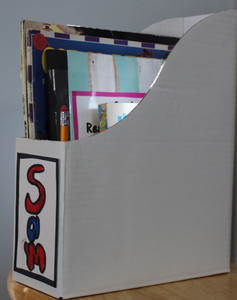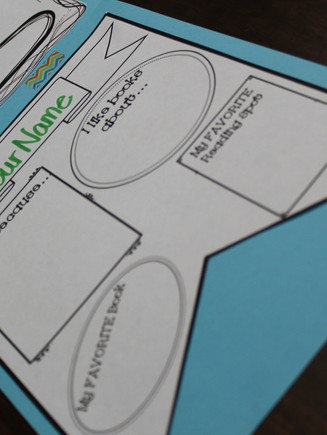
Easing everyone back into the school day routine can be a bit challenging.
You don’t want to sacrifice good instructional time, but you don’t want to stress everyone out either. You have to find that “happy medium” where instructional time is valued but all the little people are content and unstressed.
The new year marks new beginnings and fresh starts. It’s time to capitalize on that theme to ease everyone—students and YOU—back into the school day routine.
Instead of heading straight into the content, engage students in some short read alouds with instructional intentions they won’t even realize. They'll think they are just hearing a good book.
Focus on the individuals that you have in the room; let your students focus on themselves for a bit to gain a sense of what they want (and need) to accomplish. Provide opportunities for students to revisit their own reading and writing lives.
Work on refreshing the classroom setting and procedures.
The new year is always a great time to…
1. Look at How to Be Better in the New Year
Students need to understand the process of evolving to always become better than we were before. Making improvements.
Start the first day back in the new year with a little reflective and forward-thinking. Use a simple and easy tool to have students think forward and reflect on themselves.
Students should think about actions they can take to become better than they already are. Have students think about habits to start in their lives and habits to break away from to improve.
2. Tweak Procedures or Set New Ones
Reflect on the circumstances and experiences of the previous semester to determine what is needed to do a little better in maintaining classroom management.
Now is the perfect time to make little changes to procedures that just weren’t giving you the results you wanted in the classroom. Maybe there is a particular result you are looking for, but no procedure set in place. For instance, maybe there is a group of students that can handle not asking for permission to go to the bathroom, but rather just take the pass and go. They are a responsible group and can handle managing the 'one person out at a time' rule.
It is something that you can determine based on the chemistry of the group.
Another example may be that you want to add new seating to the classroom for reading and independent work, but students must share the time spent in those new areas. So, you set up a procedure for students to share the new seating and practice that procedure for the first few days of the new year.
3. Read Aloud Short Texts to Build A Collection of Possible Mentor Texts
Who doesn’t love a good read aloud?
Spending the new year and the first few days back in the school day routine with short read alouds is a great way to ease back in.
When choosing short texts to read aloud the first few days after the break, be intentional. Students don’t need to know what your intentions are with the text, but you will have a purpose for sharing that particular text with your students.
Determine texts that will serve a purpose for skills and strategies that you know you will need to teach. When you read aloud the texts you have chosen, read for enjoyment first and foremost.
Stop and think aloud using strategies and skills you know you will be teaching in the future. This will provide a proficient reader model for students to experience that type of strategic thinking.
You may have students interact by prompting them with open-ended questions that will stretch their thinking. You will be able to gauge the kind of thinking your readers are doing and have authentic data to structure future minilessons.
4. Reorganize Supplies to Clean and Refresh Workspaces
Who likes clutter? The new year is a time to declutter those workspaces.
It seems like everyone is looking for a fresh start in the new year. For me, that includes cleaning up my living and working spaces. Students need opportunities to clean up their spaces.
Let’s face it before break started things were moving quite quickly. There was not a lot of time for cleaning and refreshing. Now is the time!
Let students clean out their desks, lockers, cubbies or whatever defines their personal space.
If students have reading boxes or bags and writing boxes or bags, let them reassess what supplies are in those containers and restock.
5. Revisit and Reexamine Reading Lives
Students need to see themselves as readers. They need to experience living the readerly life.
If you started the school year with students getting to know themselves as readers, the new year is a great time to revisit that work. If you haven’t had readers look at the kinds of readers they are, now is a GREAT time to let them do that.
How?
Start by sharing the kind of reader you are. You may want to share your book basket or personal shelfie.
Use the language, “I’m the kind of reader who…” when sharing what books you are reading.
Then share, “I want to become the kind of reader who…” to share how you would like to grow as a reader.
Finally, let students know your plan or action steps to become that kind of reader. Use the language, " I will become that reader by..."
This is just one example of how you could share your reading life to inspire students to discover their own reading lives.
Have students create a Reading Life section in their readers’ notebooks.
Students could create a visual bookshelf of their favorite books.
Students could write about their reading interests.
Students could create a collage of their reading life.
Have students decide what kind of reader they are.
Have students decide the kind of reader they want to become.
Have students determine how they will become that reader.
The possibilities are endless.

6. Students Create Personal Reading & Writing Goals
A fresh new year means a fresh new start.
Begin with setting goals for reading and writing when students are evaluating their reading and writing lives.
Your learners will examine and evaluate where they are right now as readers and writers and determine what they want to accomplish by the end of the grading period.
When students work to create their own personal goals for reading and writing, they will be better equipped to work towards reaching those goals.
Take your learners through guided steps when creating their own learning goals for reading and writing. Have your learners...
reflect on and evaluate their previous work.
determine where they want to go as a reader (or writer) from this point.
create a goal including the skill they want to learn, how they will do it and within a specific time frame.
determine specific actions they can take to mee their goal.
decide when they will revisit their goal to assess and reflect.
7. Set New Year’s Resolutions
Those academic goals are essential, but how are your students working toward improving themselves? You may consider taking a little time to guide your learners in making new year's resolutions.
Take some time for students to see how they can improve their personal lives. This could be incorporated into reading, as well.
Think about all the texts that you have read or will read. Think about the themes and messages of those texts. They are all about characters improving and changing.
Use those talking points to build on creating personal goals or resolutions.

8. Review Previous Learning to Assess Where to Go Next
If you have a self-contained classroom and you teach all subjects, you will want to review previous learning before jumping into new curriculum and content.
A fun way to see what students have retained is using an alphabet book. I know…it sounds very primary but hear me out!
This review activity will create good discussions and students will work together to remember what all they have learned.
As you move around from group to group you will be able to spot misconceptions that need to be addressed and misunderstandings that need to be cleared up before moving into new content.
Give students a blank alphabet booklet.
Start with an open-ended very general prompt, such as…”Think about all that we have learned in Social Studies so far."
Now I want you to start listing what you have learned on the appropriate page in your book. For example, I might think about the Civil War. So, I would go to the C in my book and write the Civil War with a few sentences to summarize what I remember. OR, I may think about Abraham Lincoln, so I would go to the A in my book and write Abraham Lincoln and write a few sentences about what I remember about him. Try to remember something for each letter of the alphabet.”
After a reasonable amount of time for your age group, have students turn to a partner to share their work. They may add to their own books based on their partner’s ideas.
Then after a few minutes, have partner pairs "square up" and group together with another partner pair to share their alphabet books. They may add to their books any shared ideas from their new partners.
Finally, come back together and have students share what they have learned so far. This is a great opportunity to create an anchor chart or timeline or graffiti wall or web organizer of these ideas to serve as a visual representation of prior learning.

Where to find the tools pictured for the following ideas to start the new year
1. Look at How to Be Better in the New Year
3. Read Aloud Short Texts to Build A Collection of Possible Mentor Texts
5. Revisit and Reexamine Reading Lives
6. Students Create Personal Reading & Writing Goals
7. Set New Year’s Resolutions
8. Review Previous Learning to Assess Where to Go Next
Until next time,




























Comments